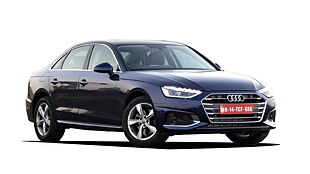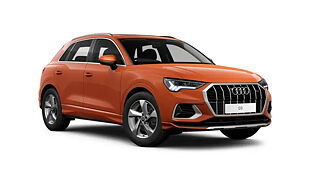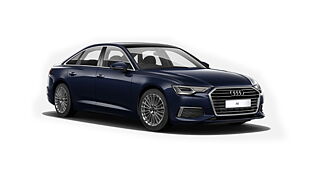Introduction
The launch of the Audi Q3 in 2012 was perhaps the watershed for the entry-level luxury cars in India. Of course, the BMW X1 was already on sale for a couple of years, but the real change came with this compact SUV from Audi.
 Mercedes soon followed with the B-Class and A-Class hatchbacks, BMW introduced the 1 Series, Audi got the A3 sedan and recently Mercedes once again upped the ante with the CLA and GLA models. In this barrage of launches, the attention has moved away from the Q3 despite it being one of the most capable products in the segment. Audi has hence opted for a facelift in the hope of making it more relevant in the face of growing competition.
Mercedes soon followed with the B-Class and A-Class hatchbacks, BMW introduced the 1 Series, Audi got the A3 sedan and recently Mercedes once again upped the ante with the CLA and GLA models. In this barrage of launches, the attention has moved away from the Q3 despite it being one of the most capable products in the segment. Audi has hence opted for a facelift in the hope of making it more relevant in the face of growing competition.Looks
There are minimal changes to the exterior of the car. At the front, the car dons a new face with the bold singular frame grille that gets matte chrome finish. It extends all the way to the headlamp and forms a contrast with the body colour, making the front appear sportier than before.

The redesigned front bumper gets black inserts for the fog-lamp housing, interestingly there are no fog lamps here. That is because, the car gets new all-LED headlamps (first in segment) with DRLs, which Audi claims, offers the enough illumination even in the foggy conditions. The other change is to the internals of the headlamp, the shape of the day time running lamps is different and they are visibly larger than before.


Interior
The basic layout of the cabin hasn’t changed in the facelift, but there are a few additions both in terms of the design and features. There are new aluminium inserts for the dashboard, gearlever and the door trim; these add some spark to the otherwise bland looking interior.

The features list now includes the much needed reverse camera. There was hardly any visibility at the back with the sloping rear windshield and tiny cabin mirror now the camera will at least relieve one of all the parking woes. Like in the Q3 Dynamic, it gets a retractable screen for the MMI infotainment system that offers access to Sat-Nav and Audi Drive Select.
 The only other interesting addition is the mobile cradle in the centre armrest, place the phone in this cavity and it will use the car antenna for network and thereby reduce the battery usage. That said the Q3 has the best cabin space among the entry-level luxury cars. It can seat five people more comfortably than any other car in the segment and also swallow decent amount of luggage in the 460-litre boot.
The only other interesting addition is the mobile cradle in the centre armrest, place the phone in this cavity and it will use the car antenna for network and thereby reduce the battery usage. That said the Q3 has the best cabin space among the entry-level luxury cars. It can seat five people more comfortably than any other car in the segment and also swallow decent amount of luggage in the 460-litre boot.Performance
Since this is a facelift, unsurprisingly, there are no mechanical changes in the new Audi Q3. It continues to derive power from the reliable 2.0-litre TDI engine developing 177bhp and 380Nm of torque. Neither the power nor efficiency have ever been a problem with this setup and only the paddle shifters were missing. Audi has finally added the two switches behind the steering wheel making the optimum usage of the seven-speed dual-clutch gearbox that much easier.

The biggest differentiator between the Q3 and rest of the entry-level cars is the Quattro all-wheel-drive system. It offers better traction to go hard around corners and some teeth on gravel in case one decides to put the ‘Q’ badge to test.
In terms of ride and handling this is the same car as its predecessor, it continues to use the comfort off-road suspension that is well balanced. The ride is firm but comfortable and for an SUV of its size, it can make going around the bends a fun task.

While I think, Audi will offer only the 2.0-litre diesel at the moment, our wish list includes the new 1.4-litre TFSI petro engine. It is might be a tiny engine but has enough grunt to get the compact SUV to 100kph in under 9 seconds, also it is kinder on the wallet with the cylinder-on-demand technology that shuts off two cylinders to save fuel.
Verdict
Frankly speaking, this is not much more than a simple facelift, concentrating purely on the cosmetic updates and adding a few additional features. If the question then is, should you consider the Q3? Most certainly! It is still the best package in the budget luxury cars. It offers decent looks, performance, space, efficiency and little bit of off-roading with the AWD.

The facelift was more of a necessity. The Q3 has been around since 2012 and nine models have been launched since then in the entry-level luxury segment, including the X1 facelift and Mercedes-Benz GLA which are considered to be direct competitors. The model then might not be much different from before, but it looks new and continues to offer a solid package for those looking to buy their first luxury car.

![Audi Q3 [2015-2017] Image Audi Q3 [2015-2017] Image](https://imgd.aeplcdn.com/272x153/cw/ec/19252/Audi-Q3-Right-Front-Three-Quarter-75908.jpg?wm=0&q=80)

























